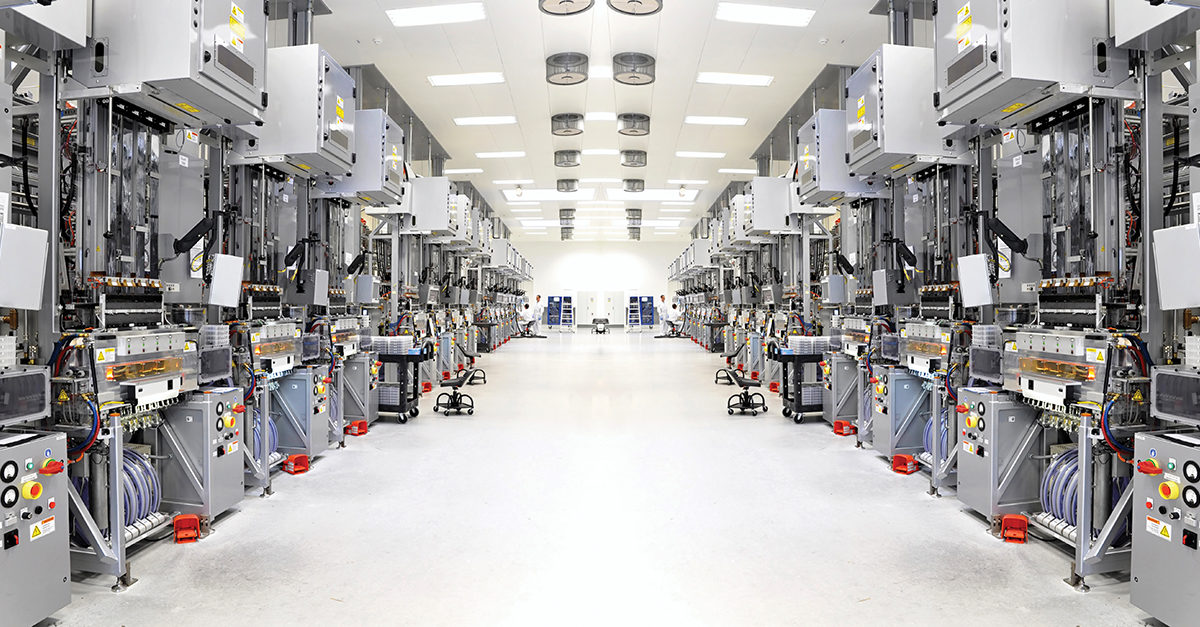When we think of cleaning industrial facilities, we generally envision large, heavy industries with big, dirty machines and buildings. While this type of account remains a segment of the industrial market, today’s industrial customer can be small to large; a high-tech manufacturer or assembler; a 3D printer, nano, or bio lab; or an international aerospace or pharmaceutical giant with hundreds, thousands, or even millions of square feet of production, lab, office, warehouse, high-tech computer, and/or cleanroom space.
More than several hundred thousand manufacturing establishments with millions of employees account for roughly 8 percent of the U.S. workforce and billions in wages each year. As a result, industrial clients are a large and potentially profitable market with special cleaning needs.
Pricing and Production Rates
There are many factors that should be taken into consideration when bidding industrial locations. Pay, hourly billable, and cost-per-square-foot rates will be slightly higher—15 to 30 percent—than rates charged for commercial office cleaning. It is impossible to give exact numbers, as rates will depend on the client’s geographic location, industry, specifications, contract terms, competition, and other factors. A study of prevailing wage rates for specific types of cleaning workers in each county will give you an idea about the high end of the wage rate for the area.
Industrial cleaning requires special training, chemicals, and equipment in addition to a higher hourly rate to attract and retain staff where the work is seen as specialized, dangerous, or physically demanding. You can expect to pay US$2 to $5 more per hour for those working in specialized or critical areas of industrial locations versus office buildings.
Pricing Considerations
In larger cities and facilities, industrial operations may have unions. If a customer is paying higher hourly rates than you are, this may provide you with an opportunity to charge high rates and still be less costly than the rate previously paid to union workers. Providing services as a nonunion contractor working in a union environment may result in friction, especially if your staff has replaced union workers. If you are a nonunion contractor, you may get pressure from the customer or a union to encourage or force you to unionize your operation.
Equipment, Supplies, and Chemicals
Check the client’s specifications and requirements closely to see if the job requires specific chemicals, supplies, or equipment. These items can be far more expensive than what you normally use for commercial accounts. In some locations, substitutions are not allowed and third-party certification of products and equipment may be required. This can relate to mops, cloths, safety equipment, chemicals, auto scrubbers, floor machines, pressure washers, hoists, and lifts. Check with a qualified supplier for accurate pricing information, and get quotes and details in writing to avoid misunderstandings and costly surprises later when you place the actual order for supplies.
Cleaning Specifications
Cleaning tasks start with basic responsibilities, such as office cleaning, restroom care, and floor care, but can progress to more challenging areas that require the use of specialized chemicals, equipment, and procedures found in controlled access and cleanroom environments.
Knowing the what, when, and where of cleaning is critical in manufacturing and industrial locations. Clients or facility managers often require written schedules, procedures, checklists, and testing to validate proper and on-time completion of work. You will need qualified staff, supervision, and management to achieve success and profit in these accounts.
Staffing
Depending on the size of the location, it may be best to utilize separate staff members or crews for critical versus noncritical area cleaning. Offices, lunchrooms, common areas, and warehouse space would be considered noncritical, and normal production rates and pricing may apply. Critical areas would include labs, research, production, and manufacturing areas where the work is specialized and requires more training and closer supervision. In these areas premium rates and pricing would apply.
Most locations will require some level of employee screening, bonding, certification, and security clearance. Depending on the hiring requirements, screening and certification can cost up to several hundred dollars per person and take several months to obtain.
Safety
Safety is of the utmost concern in all types of facilities, but it takes on special meaning with industrial facilities. Appropriate personal protective equipment (PPE) will be a requirement and must be worn in all production areas. Proper PPE could include: safety glasses, gloves (cloth or liquid proof), hard hats, harnesses, vests, ear plugs, hard-tip or anti-slip footwear, knee pads, dust or fitted vapor respirators, etc. Such items must be provided by the employer, the cost of which you need to consider when preparing a bid.
Special Considerations
Industrial facilities may pose certain challenges that you may not see in other types of facilities, which is why you should evaluate the points mentioned here while preparing your bid.




